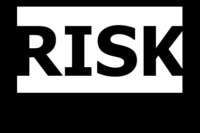“Do I think there is more fear — no. Do I believe there is great concern — absolutely,” says J. Brett Carruthers, a manager of risk services in New York state.
“Back in the good old days, I know there was fear. Fear that families’ loved ones would not come home from the mine. Fear that their children might not have a better future. But all this was not out in the open like it is now. Everybody has their thoughts and fears on their sleeve, now,” says Ron Hayes, a safety training and construction contractor in Alabama.
Blame it on “overblown media pessimism,” as Donald Warfield posted on an internet discussion group. Stories of recession homeless victims are easy to find, for certain. So are headlines: “Ten signs you work in a fear-based workplace;” “30 ways to wreck your career;” and books such as Breaking the Fear Barrier by Tom Rieger.
The mental stress surge
But the fears, anxieties and worries you might have to deal with as an EHS professional in 2012 — and perhaps yourself personally — are not so much about physical hazards and chemical exposures — they are ever present. What is surging is the mental stress caused by economic risks — layoffs; pay cuts; lost bonuses; plant shutdowns; plant relocations; being a suddenly out-of-work 60-year-old baby boomer; a spouse’s loss of income; being acquired by new, unknown ownership; being led by unstable or always changing leadership; being unable to “man up” and support your family. All this leads to questions: What is going to happen tomorrow? Is there going to be a tomorrow?
A worker with these questions on his or her mind is at risk of being distracted. Also deflated, demoralized and maybe depressed. It could be a janitor, a chief executive, a nurse, a machinist, a trucker or sales rep on a road trip. The anxiety epidemic is color-blind, affecting pink, blue and white collars. As an EHS pro, now is the time to stay close to your workforce. Pros, of course, are not qualified to turn safety meetings into therapy sessions, but they’re in a position to identify the at-risk distressed and get them help through employee assistance programs.
“Father Confessors”
EHS pros have long had the reputation of being something of the shop “Father Confessor.” Who is closer to the workforce? You might just have the best “feel” for where employees’ “heads are at” of anyone in your organization. You get out on the floor, talk to employees by name, commiserate about all types of concerns and unknowns, listen closely, perhaps gently and diplomatically probe about personal “issues” if you have a trusting relationship. You’re also in a position to notice differences in outlook and appearances that could tip off fatigue and distress.
“Human resource departments are thought to be the connection between the employees and the company,” says one safety professional. “But there is a growing body of studies that conclude human resources are out of touch with their employees.”
“I’ve had a heart-to-heart talk with many employees,” says industrial hygienist Dan Markiewicz. “For various reasons including holding family together, everyone I’ve talked to said they’d take the paycheck and take their chances of getting hurt. In one case, about 50 employees in an old plant asked me as the consultant not to try to force management to fix hazards. The employees felt if management was presented a big bill to fix safety hazards, owners would probably choose to shut down the plant.”
Discomfort with the “new normal”
This is fear of the “new normal.” Here today, gone tomorrow. Says longtime safety pro Skipper Kendrick: “In today’s world, the paradigm has shifted. It will be a long time if ever before we see again working for one company throughout a career, loyalty and trust (cuts both ways) and good old-fashioned work ensuring success.”
Baby boomers in particular feel the reverberations of the new normal. They entered the workforce in the 60s and 70s when loyalty and longevity were still given. Now it’s definitely challenging for this age group to get new jobs. This quandary particularly holds true for many EHS pros; the average age of pros is 50+.
Says one pro gently shoved into early retirement: “As the VP of human resources told our focus group, age discrimination may be illegal but it exists. Age IS a factor in many hiring decisions in today’s environment.
“There is little doubt OSHA saved my ass,” says an agency field officer. “Who in private industry would hire a 62-year-old, despite having a new masters in occupational safety?”
“A movement toward youth has been seen and experienced by me and I’m sure others in the EHS field,” says Allen Macenski, CIH. “Just look at the advertisements for new positions in EHS. They are certainly not looking for ‘seasoned veterans.’ They are after candidates with five to ten years experience.”
“The job market for safety professionals has held steady. But a lot of these positions are thin on the salary side. Benefits are pretty solid, but salary is lagging by 30 to 35 percent,” reports one risk manager.
What to do
You might want to start by conducting an “anxiety audit.” It might be impossible to get management to sign off on conducting an employee perception for fear of honest feedback and “so what do we do about it?”
Chances are, especially if you’re in a smaller facility, you needn’t do something that formal. If you have been at the same location for 5-10 years, your eyes, ears, relationships and instincts will tell you pretty much what you need to know. Still, do a walkaround. Do you hear a lot of gossip about who’s rising and who’s falling? Is there a preoccupation with politics and the rumor mills?
Do numbers and policies rule? Are employees judged by how many projects they take on, and how long it takes to finish them? Does a performance appraisal boil down to, “You’ve got to do more.” “More what?” Does HR email out a steady stream of “warnings” that privileges such as flex time and telecommuting are being taken advantage of and might be eliminated?
Is the unspoken cultural assumption: “Be thankful you’ve got a job”? Does an unspoken cultural divide exist between “us versus them”?
Are meetings uncommonly silent, with all the talk coming outside after the meeting?
Do you notice more indecisiveness, negative attitudes, defensiveness, grievances, and resignation?
Your responsibilities
You’re one person in the middle of probably a fairly large organization. You have limited authority, and you alone are not going to drive fear out of your organization, to use W. Edwards Deming’s famous exhortation. But you are responsible for the rapport you have with many other employees, which if handled correctly will at least make it a little easier for you to come to work in the morning.
These are some of the things you can practice on the job to build rapport with employees: show mutual respect; use open body language; set your own agenda aside and be willing to be influenced by others; model safety and share some of the mistakes you’ve made; meet with employees in their own work areas, not your office; be extremely visible; invite conversations; ask a lot of questions; listen for real; drop any posturing and defensiveness and false optimism.
No one has a crystal ball or all the answers that will calm people down. The situation “is what it is” as the saying goes. Your best bet for helping folks: be real, don’t over-promise, “man up” as Ronnie Hayes says and “get tough.” Yes, thick skin and flinty-eyed realism help.





